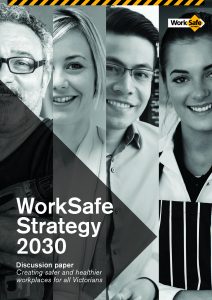 Marnie Williams, Executive Director of WorkSafe Victoria launched 2018 with a presentation at a breakfast seminar organised by the Safety Institute of Australia and hosted by Herbert Smith Freehills in Melbourne. Williams illustrated that WorkSafe is very aware of community and business expectations on her authority’s performance and showed WorkSafe is very busy as it restructures around its relocation to Geelong and elsewhere However it could change even more or in different, more sustainable, ways.
Marnie Williams, Executive Director of WorkSafe Victoria launched 2018 with a presentation at a breakfast seminar organised by the Safety Institute of Australia and hosted by Herbert Smith Freehills in Melbourne. Williams illustrated that WorkSafe is very aware of community and business expectations on her authority’s performance and showed WorkSafe is very busy as it restructures around its relocation to Geelong and elsewhere However it could change even more or in different, more sustainable, ways.
Williams’ presentation proposed a positive future where the actions and issues associated with occupational health and safety (OHS) broaden to involve the Victorian community and address safety and health concerns that may no longer fit within the established OHS definitions, approaches and strategies.

